Imagine you’re a marketer, digging through a mountain of data to understand what’s really driving your customer conversions. You rely on traditional metadata practices, only to find that your insights are fragmented and incomplete. You’re not alone—many marketers face this same challenge. Traditional metadata often offers a narrow view, failing to capture the full story of customer interactions across various channels. This can lead to misguided strategies and missed opportunities.
The need for robust metadata alternatives has never been more critical. Today’s marketing landscape demands a holistic approach to data analytics, one that provides a complete picture of customer journeys and interactions. By adopting modern solutions, you can not only enhance your data quality but also drive better decision-making and ultimately, improve your marketing ROI. In this article, we’ll explore the top alternatives to traditional metadata practices that can empower your marketing efforts and help you unlock deeper insights.
Let’s dive into the top 8 tools that can help you revolutionize your marketing data strategy.
Best for: Comprehensive marketing attribution and analytics.
Cometly is a cutting-edge marketing attribution platform that provides real-time insights into customer journeys by tracking every interaction across multiple channels.
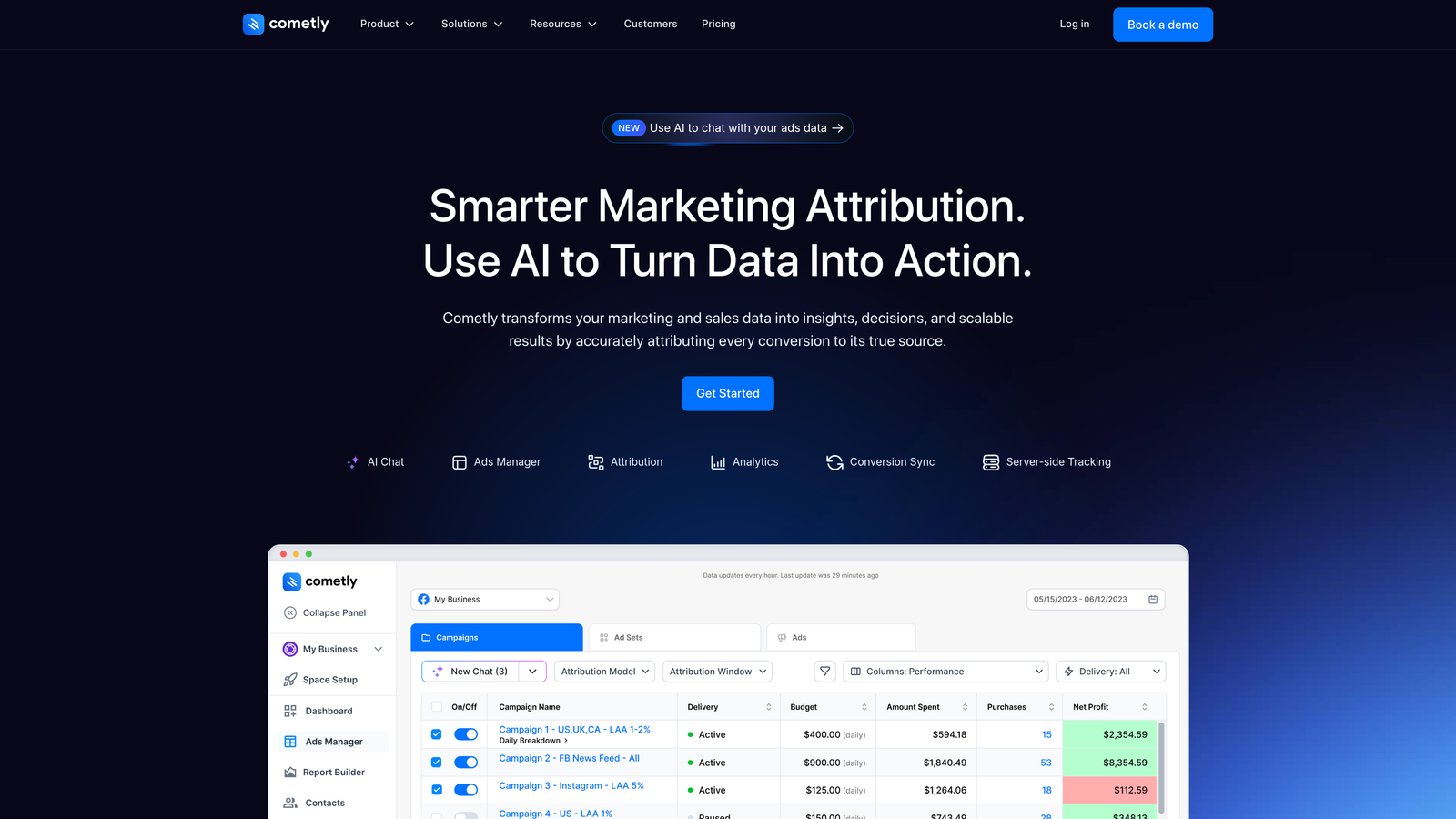
Overview & Background: Cometly stands out in the realm of marketing analytics by offering a holistic view of customer interactions. Unlike traditional tools, Cometly connects your ad platforms, CRM systems, and website to capture every touchpoint, enabling marketers to see exactly which ads and channels are driving leads and revenue. For more on google analytics alternative, check out our dedicated page.
Key Features:
1. Real-Time Attribution: Cometly allows marketers to track and analyze customer journeys in real time, offering insights that can be acted upon immediately.
2. AI-Driven Recommendations: The platform utilizes AI to identify high-performing ads and campaigns across various channels, helping marketers scale their efforts with confidence.
3. Multi-Channel Performance Tracking: Cometly effectively tracks customer interactions across all platforms, ensuring no touchpoint is overlooked.
4. Enhanced Target Data for Ad Platforms: By sending enriched, conversion-ready events back to platforms like Meta and Google, Cometly improves targeting and optimization.
How It Works: Cometly integrates seamlessly with your existing marketing stack, allowing you to visualize the entire customer journey. This comprehensive approach helps marketers understand the true value of each touchpoint.
Pricing & Plans: Cometly offers various pricing plans based on the features and scale needed, accommodating businesses of all sizes.
Why It's Great for Marketers: Cometly empowers marketers to make data-driven decisions, optimizing campaigns based on real insights rather than assumptions.
Cometly’s Conversion API Features
One of the standout features of Cometly is its Conversion API, designed to enhance the accuracy of tracking and reporting conversion events. This API enables businesses to send conversion data directly from their servers to the ad platforms, bypassing potential data loss from browser restrictions or tracking blockers. This server-to-server communication ensures that marketers have a more reliable data source, leading to improved attribution accuracy and campaign optimization.
By utilizing the Conversion API, marketers can ensure that every conversion is tracked, even in scenarios where traditional pixel tracking might fail. This capability is particularly beneficial in an era where privacy regulations and browser updates are increasingly limiting tracking capabilities.
Advanced Features of Cometly
In addition to its Conversion API, Cometly offers several advanced features that help marketers optimize their strategies:
1. Attribution Modeling: Cometly provides customizable attribution models that allow marketers to assign credit to different touchpoints along the customer journey. This flexibility helps in understanding which channels are most effective in driving conversions.
2. Event Tracking: The platform allows for detailed event tracking, giving marketers insights into specific user interactions, such as button clicks or form submissions. This level of detail can inform adjustments to campaigns and website design.
3. Multi-Touch Attribution: Cometly supports multi-touch attribution, which enables businesses to assess the impact of all marketing channels and touchpoints, rather than just the last interaction. This comprehensive view helps in making informed budget allocation decisions.
4. Custom Reporting: Cometly’s reporting features allow marketers to create custom dashboards tailored to their specific KPIs and metrics, facilitating quick access to crucial insights and performance data.
5. Integrations with Major Platforms: Cometly seamlessly integrates with a range of advertising and marketing platforms, enhancing its utility and ensuring that data flows smoothly between systems. This capability helps marketers maintain a cohesive strategy across all channels.
By leveraging these advanced features, Cometly empowers marketers to make data-driven decisions and refine their strategies based on comprehensive insights into customer behavior and engagement.
Best for: Comprehensive website and app analytics.
Google Analytics 4 is the latest iteration of Google’s powerful analytics tool, designed for a more integrated approach to data collection.
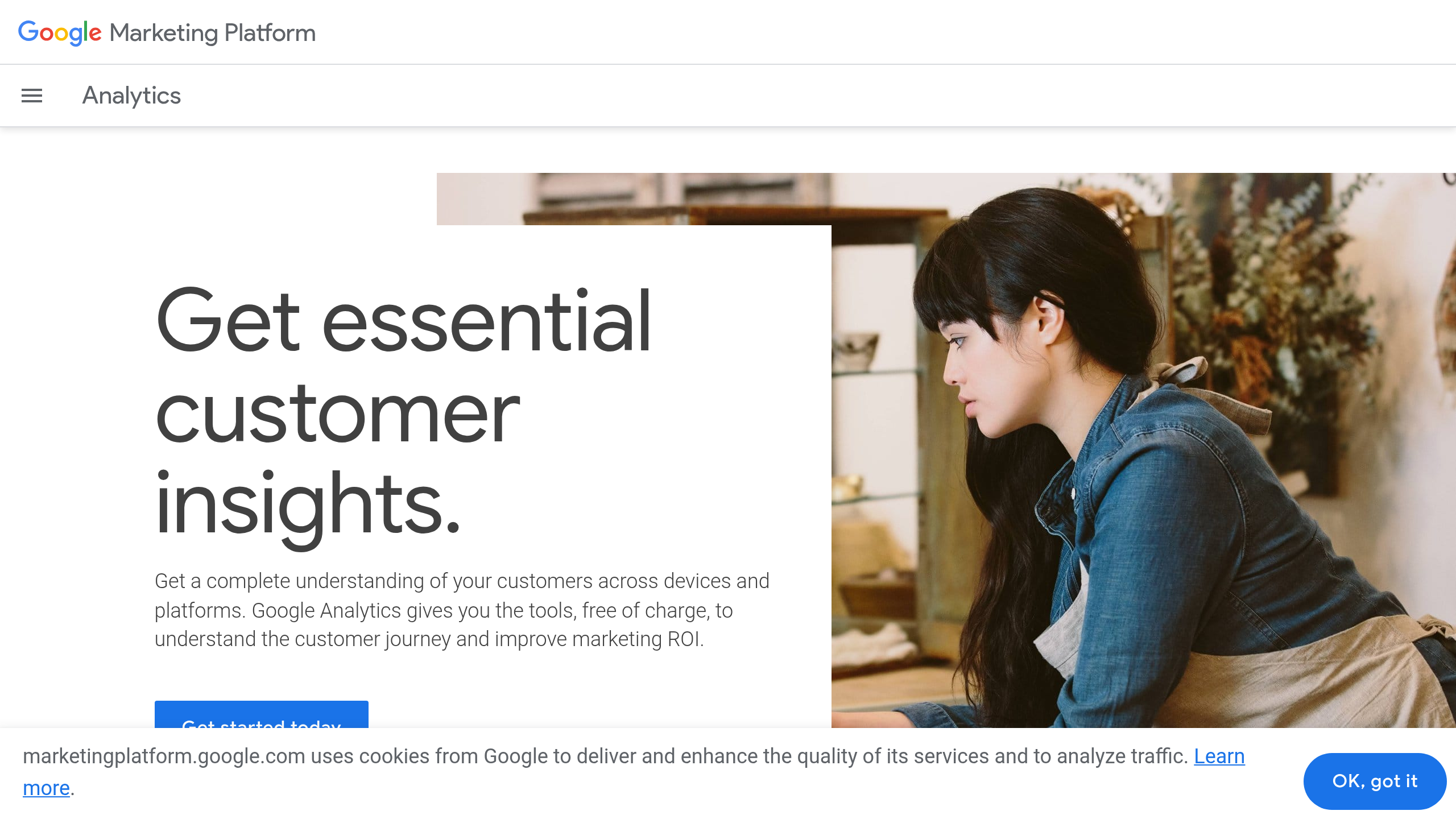
Overview & Background: GA4 represents a significant shift from Universal Analytics, focusing on event-driven tracking rather than session-based metrics. This transition allows marketers to gain deeper insights into user behaviors across multiple devices and platforms. If you face attribution challenges in marketing analytics, this tool can provide solutions.
Key Features:
1. Cross-Platform Tracking: GA4 provides the ability to track users across web and app platforms, giving a unified view of customer interactions.
2. AI Insights into User Behavior: Advanced machine learning capabilities help predict user actions and identify trends, enhancing marketing strategies. Learn more about top Google Analytics alternatives.
3. Advanced Segmentation Capabilities: Marketers can create custom segments to analyze user interactions more precisely, tailoring strategies to specific audiences.
How It Works: GA4 collects data through events, allowing for a more nuanced understanding of user interactions. This event-driven model helps marketers understand the customer journey in a detailed manner.
Pricing & Plans: Google Analytics 4 is free to use, making it accessible for businesses of all sizes.
Why It's Great for Marketers: GA4’s comprehensive insights and predictive capabilities make it an invaluable tool for enhancing digital marketing strategies.
Best for: Data unification across platforms.
Segment is a leading customer data platform that centralizes data collection and management, making it easier for businesses to understand their customers.

Overview & Background: In a fragmented data landscape, Segment simplifies the way businesses collect and manage customer data. By unifying data across various marketing and analytics tools, companies can create a single source of truth.
Key Features:
1. Unified Customer Profiles: Segment builds comprehensive profiles for each customer, consolidating data from various sources for better insights.
2. Integration with Various Marketing Tools: The platform connects easily with numerous marketing tools, ensuring seamless data flow and accessibility.
3. Real-Time Data Collection: Marketers can collect and analyze data in real time, allowing for quick adjustments to marketing strategies.
How It Works: Segment collects data from multiple sources and unifies it into a single profile, making it easier for businesses to analyze customer interactions.
Pricing & Plans: Segment offers a free tier for startups, with paid plans that scale based on data volume and features needed.
Why It's Great for Marketers: Segment’s ability to unify data helps marketers gain a clearer understanding of their customers, improving targeting and personalization efforts.
Best for: Integrated marketing and CRM solutions.
HubSpot provides an all-in-one platform for inbound marketing, sales, and customer service, enabling businesses to manage their entire customer lifecycle.

Overview & Background: HubSpot’s integrated solution helps businesses streamline their marketing efforts while enhancing customer engagement. With tools for content management, social media, email marketing, and CRM, HubSpot covers all bases. For insights on how to setup datalake for marketing attribution, check out our guide.
Key Features:
1. CRM Integration: HubSpot’s CRM seamlessly integrates with its marketing tools, providing a holistic view of customer interactions. Learn more about top HubSpot Marketing Attribution alternatives.
2. Marketing Automation: Automates marketing tasks to save time and improve efficiency, allowing marketers to focus on strategies rather than manual processes.
3. Analytics Tools for Lead Tracking: HubSpot provides detailed analytics to track leads and measure campaign effectiveness.
How It Works: HubSpot's platform combines various marketing functions into one dashboard, allowing for easy management and tracking of marketing efforts.
Pricing & Plans: HubSpot offers a free version with limited features, along with tiered pricing plans for more advanced capabilities.
Why It's Great for Marketers: HubSpot’s comprehensive tools make it easy for marketers to align their marketing and sales efforts, enhancing overall effectiveness.
Best for: Product analytics and user engagement.
Mixpanel focuses on user engagement and offers powerful product analytics to help teams understand how users interact with their products.
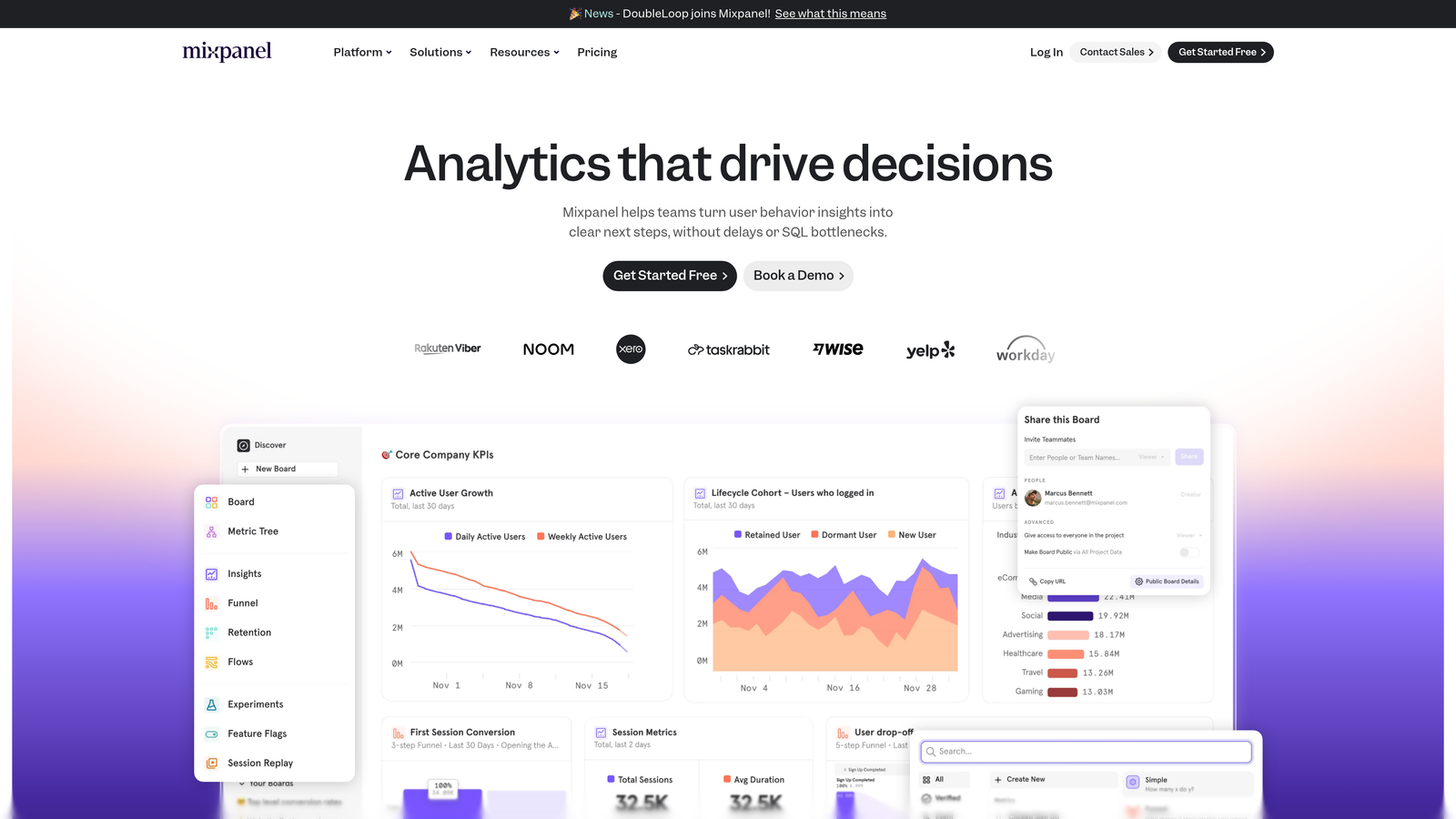
Overview & Background: Mixpanel distinguishes itself with its emphasis on event tracking, providing insights into user behavior that inform product development and marketing strategies.
Key Features:
1. Event Tracking: Mixpanel allows businesses to track user interactions with products in detail, helping to identify engagement trends.
2. Funnel Analysis: Understand where users drop off in the conversion process, enabling targeted improvements. For more information on how to evaluate marketing performance metrics, refer to our guide.
3. Cohort Analysis for User Retention: Analyze specific user segments to improve retention strategies and engagement efforts.
How It Works: Mixpanel collects data on user behavior and allows teams to create reports that inform marketing and product decisions. Learn more about top Mixpanel alternatives.
Pricing & Plans: Mixpanel offers a free tier with limited features, with paid plans based on event volume and additional features.
Why It's Great for Marketers: Mixpanel’s focus on user behavior provides actionable insights that can significantly enhance product development and marketing strategies.
Best for: Behavioral analytics and product intelligence.
Amplitude provides powerful behavioral analytics tools that help companies understand user journeys and inform their product strategies.
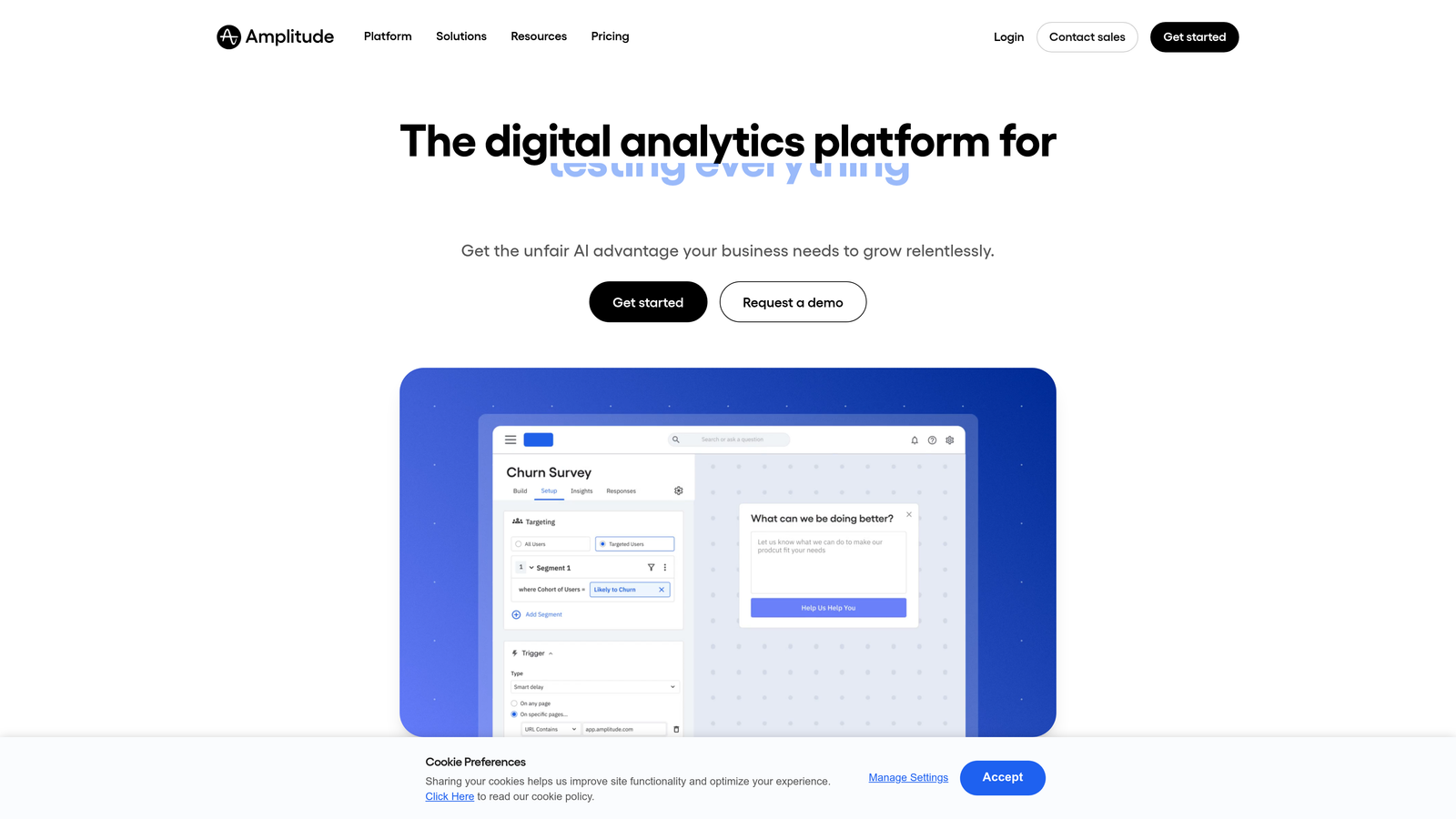
Overview & Background: Amplitude has made a name for itself in the analytics space by offering deep insights into user behavior, enabling businesses to make data-driven decisions.
Key Features:
1. Behavioral Cohorting: Segment users based on their behavior to tailor marketing efforts and product features.
2. Advanced Analytics Features for Product Usage: Provides tools to analyze how users interact with products over time. For those interested in types of marketing analytics, we have a detailed overview.
3. User Path Analysis: Visualizes user journeys to identify bottlenecks and opportunities for improvement. Learn more about top Amplitude alternatives.
How It Works: Amplitude collects extensive user interaction data, allowing businesses to analyze and optimize their products based on user feedback and behavior.
Pricing & Plans: Amplitude offers a free version with limited features, along with tiered pricing based on usage and advanced features.
Why It's Great for Marketers: Amplitude’s robust analytics capabilities empower teams to make informed product and marketing decisions based on actual user behavior.
Best for: Tailored tracking solutions for specific business needs.
Datafast offer specialized tools that serve niche markets and provide tailored tracking capabilities.
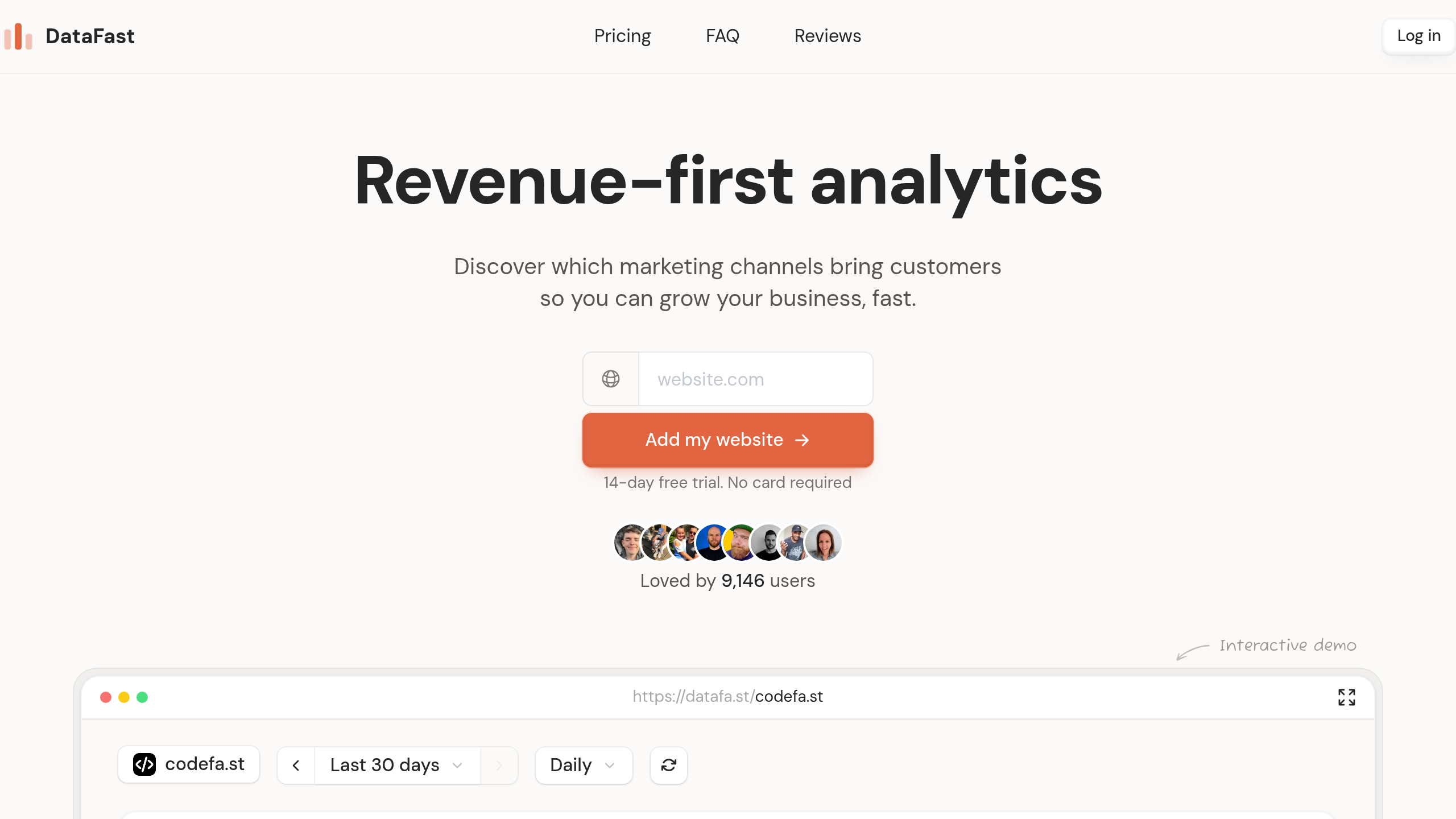
Overview & Background: As the marketing landscape evolves, many businesses find that niche tools can better address specific data needs that mainstream solutions may overlook.
Key Features:
1. Customizable Tracking Solutions: Tailor tracking capabilities to meet unique business requirements.
2. Integration with Existing Tools: Ensure that niche solutions can integrate seamlessly with your current marketing stack.
3. Scalability: Many niche tools offer scalable solutions that grow with your business needs.
How It Works: Datafast Alternatives provide businesses with tools designed to meet specific tracking challenges, ensuring comprehensive data collection.
Pricing & Plans: Pricing varies by provider, with many offering flexible plans to accommodate different business sizes and needs. Learn about top DataFast alternatives.
Why It's Great for Marketers: Utilizing specialized tools allows businesses to gain insights that might be missed by more generic solutions, enhancing overall marketing effectiveness.
Best for: Advanced data visualization and analytics.
Tableau is a powerful data visualization tool that helps marketers transform complex data into accessible insights.

Overview & Background: Tableau allows businesses to visualize their data in a way that makes it easier to understand trends and patterns, facilitating better decision-making.
Key Features:
1. Interactive Dashboards: Create dynamic dashboards that provide real-time insights into marketing performance.
2. Data Blending: Combine data from multiple sources for a comprehensive view of marketing efforts. For insights on how to use analytics to drive business growth, refer to our guide.
3. Predictive Analytics: Utilize built-in predictive modeling tools to forecast trends and make proactive decisions.
How It Works: Tableau connects to various data sources, allowing marketers to create customized visualizations that inform strategy.
Pricing & Plans: Tableau offers a free trial, with subscription-based pricing for full access to its features. Learn more about top Tableau alternatives.
Why It's Great for Marketers: Tableau's advanced analytics capabilities enable businesses to gain deeper insights into their marketing data, leading to more informed strategies.
In the rapidly evolving landscape of marketing data, leveraging effective metadata alternatives is essential for achieving comprehensive insights. Tools like Cometly, Google Analytics 4, Segment, and HubSpot provide powerful capabilities that can transform how you understand and interact with your customers.
As you explore these tools, consider your unique business needs and the specific features that will best support your marketing strategies. Whether you require real-time insights, advanced attribution models, or data unification across platforms, there is a solution available to meet your requirements.
Ready to take the next step in optimizing your marketing efforts? Get your free demo of Cometly today and see how it can enhance your data-driven decision-making.
Learn how Cometly can help you pinpoint channels driving revenue.
.svg)
Network with the top performance marketers in the industry